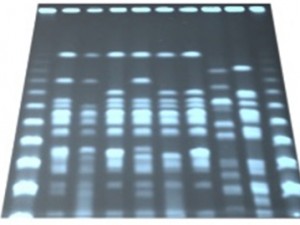Foods are nutrient-rich growth media for microorganisms. In the food industry, microorganisms can cause spoilage, be used as part of the manufacturing process and can also be a means to transmit disease. Though not all microorganisms are harmful to humans, it is important to identify potentially pathogenic microbes in foods and analyze the overall microbiological population in order to observe their effect on important qualities such as appearance, flavor and odor (Encyclopædia Britannica, Inc. by Michael J. Pelczar, Jr. 2014).
Spoilage/Indicator Organism Testing
Aerobic and/or Anaerobic Plate Count
Aerobic and/or Anaerobic Lactic Acid Bacteria Count
Enterobacteriaceae Count
Fecal Coliform Count
Generic Escherichia coli Count
Pseudomonas spp. Count
Psychrotrophic Plate Count
Staphylococcus aureus Count
Total Coliform Count
Yeast & Mold Count

Pathogen Testing:
Escherichia coli O157:H7
Non-O157 Shiga-toxin producing E. coli (STEC)
Salmonella spp.
Listeria monocytogenes
Listeria spp.
Staphylococcus aureus Count
Bacillus cereus
Cronobacter sakazakii
Campylobacter spp.
Shigella spp.
Clostridium perfringens
Yersinia enterocolitica
Shellfish Sanitation:
National Shellfish Sanitation Program (NSSP)
Shellfish Meat Total/Fecal Coliforms (APHA III)
Shellfish Growing Waters Total/Fecal Coliforms (APHA II)
Shellfish UV Processed Waters Total Coliforms (APHA II)
Detection of Vibrio parahaemolyticus, V. cholera & V. vulnificus
